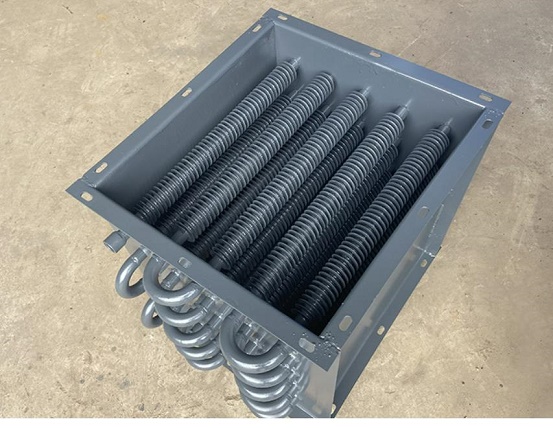What is high frequency welded finned tube radiator?
A high-frequency welded finned tube radiator is a type of heat exchanger commonly used in various industries such as HVAC, power generation, and manufacturing. It consists of tubes and fins, with the tubes carrying the fluid that needs to be cooled while the fins increase the surface area of the tubes, allowing for more efficient heat transfer to the surrounding air. During manufacturing, the fins are securely bonded to the tubes using high-frequency welding techniques, ensuring good thermal conductivity and durability. These radiators are typically exposed to airflow, either through natural convection or forced air, to cool the fluid. They are often part of larger cooling systems and play a crucial role in applications requiring efficient heat dissipation.
What the high frequency welded finned tube radiator application?
High-frequency welded finned tube radiators are widely used in various industries such as HVAC, power generation, chemical, and manufacturing. They are employed to cool different fluid mediums like water and oil to maintain the operating temperatures of equipment and systems. Their efficient heat conduction and durability make them indispensable components in industrial applications, enhancing equipment performance and reliability. In HVAC systems, they regulate indoor temperatures by cooling circulating fluids such as water or refrigerants. In the power generation sector, these radiators are often used to cool cooling mediums in generators or transformers to ensure equipment operates within safe and efficient temperature ranges. In chemical industries, they control temperatures in chemical reactions, while in manufacturing, these radiators can be used for cooling hydraulic systems, lubricants, and heating or cooling process fluids. Overall, high-frequency welded finned tube radiators play a crucial role in various industrial applications, thanks to their efficient heat conduction and durability, enhancing equipment performance and reliability.
High frequency welded finned tube radiator advantages
1. Efficient Heat Transfer: The fins attached to the tubes significantly increase the surface area, facilitating better heat transfer between the fluid inside the tubes and the surrounding air.
2. Compact Design: Despite their high heat transfer efficiency, these radiators often have a compact design, allowing for space-saving installation in various applications.
3. Strong Bonding: The high-frequency welding technique used to attach the fins to the tubes creates a strong bond, ensuring durability and longevity of the radiator.
4. Versatility: They can be constructed using various materials such as copper, aluminum, or stainless steel, making them suitable for a wide range of fluid types and operating conditions.
5. Wide Application: High-frequency welded finned tube radiators find applications in HVAC systems, power generation, chemical processing, manufacturing, and more, showcasing their versatility and adaptability across industries.
6. Enhanced Performance: By efficiently dissipating heat, these radiators help maintain optimal operating temperatures for equipment and systems, thus improving overall performance and reliability.
What the high frequency welded finned tube components?
1. Pipe (Tube): The pipe serves as the main body of the radiator, usually made of metal materials such as copper, aluminum, or stainless steel. It carries the fluid to be cooled, such as water or oil.
2. Fins: Fins are attached to the outer surface of the pipe, increasing the heat exchange surface area between the pipe and the surrounding air. They are commonly made of metal materials such as aluminum or copper.
3. Welding Points: Welding points connect the fins to the pipe, utilizing high-frequency welding techniques to ensure secure attachment and facilitate heat transfer.
4. Welding Area: The area where the fins come into contact with the pipe and are welded. It undergoes high-frequency current and pressure treatment to ensure welding quality and connection strength.
5. Fin Gaps: Gaps between the fins allow air or other cooling mediums to flow through, effectively removing heat from inside the pipe and achieving the purpose of heat dissipation.

High frequency welded finned tube radiator |


